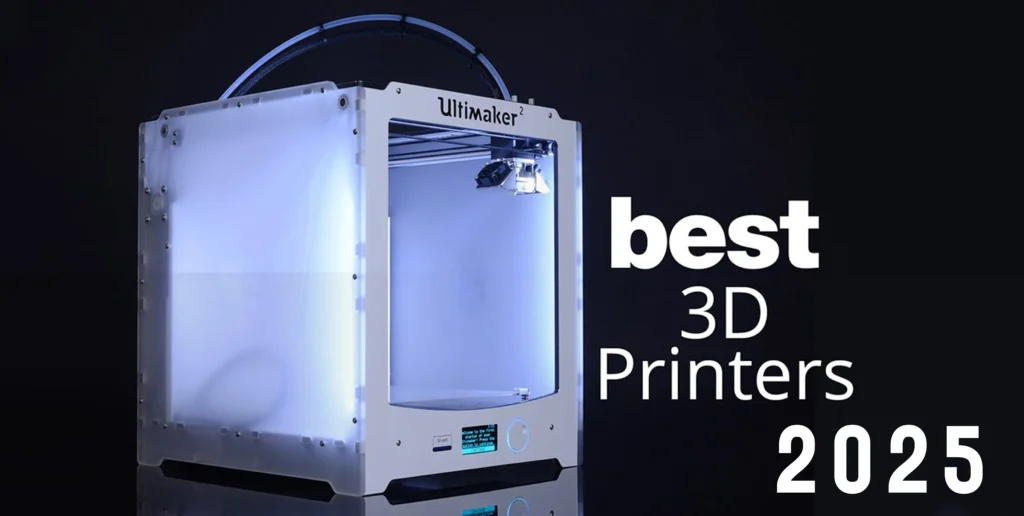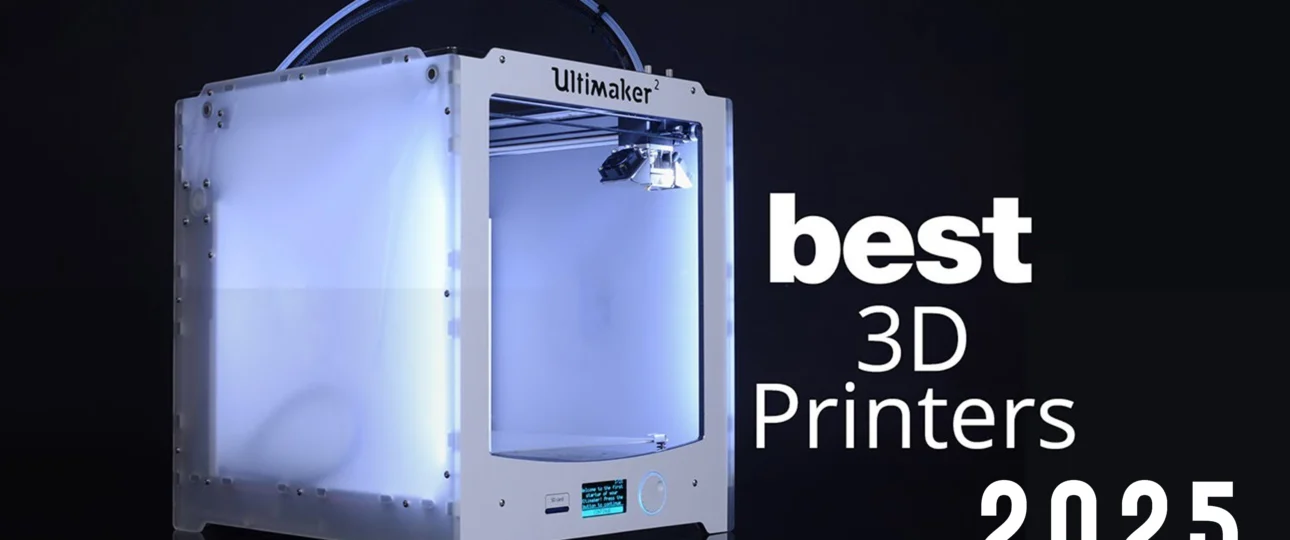
Table of Contents
Introduction: The Future of 3D Printing is Here
Imagine designing a custom phone case in the morning and holding the finished product by lunchtime. A decade ago, this would have seemed like magic. Today, 3D printing makes it possible whether you’re an artist, engineer, or hobbyist.
The right 3D printer can turn your ideas into reality with stunning accuracy. But with so many models on the market, how do you choose? This guide breaks down the best 3D printers of 2025, comparing speed, precision, and affordability to help you make the smartest investment.
How We Selected the Best 3D Printers of 2025
Choosing the perfect 3D printer isn’t just about specs it’s about real-world performance. We tested and researched dozens of models, focusing on:
✅ Print Quality – Layer resolution, smoothness, and fine-detail accuracy.
✅ Speed & Efficiency – How fast it prints without sacrificing precision.
✅ Material Compatibility – Works with PLA, ABS, PETG, and specialty filaments.
✅ Ease of Use – Auto-leveling, touchscreen controls, and beginner-friendly software.
✅ Durability & Support – Build quality, warranty, and customer service reputation.
We also analyzed expert reviews from All3DP, CNET, and Tom’s Hardware, along with real user feedback to ensure unbiased recommendations.
Top 5 Best 3D Printers of 2025
1. Creality Ender-5 Pro – Best Budget 3D Printer
If you’re new to 3D printing and want reliability without breaking the bank, the Ender-5 Pro is a standout.
Why It’s a Top Pick:
✔ Affordable – Priced under $400, it’s perfect for beginners.
✔ Sturdy Frame – Reduces vibrations for smoother prints.
✔ Large Build Volume – 220 x 220 x 300mm lets you print bigger projects.
Best For: Hobbyists, students, and makers who need a reliable starter printer.
2. Prusa i4 MK4 – Best Overall 3D Printer
The Prusa i4 MK4 is the gold standard blending speed, precision, and ease of use.
Why It’s a Top Pick:
✔ Self-Leveling Bed – No manual adjustments needed.
✔ Multi-Material Printing – Switch between filaments effortlessly.
✔ Open-Source Firmware – Constantly updated for better performance.
Best For: Professionals and serious hobbyists who demand top-tier results.
3. Bambu Lab X1 Carbon – Fastest 3D Printer
Need speed without sacrificing quality? The X1 Carbon prints at 500mm/s—twice as fast as most competitors.
Why It’s a Top Pick:
✔ AI-Assisted Monitoring – Detects and corrects errors mid-print.
✔ Fully Enclosed Chamber – Ideal for ABS and other high-temp materials.
✔ Auto-Calibration – Ensures perfect first layers every time.
Best For: Small businesses and creators who need rapid prototyping.
4. Ultimaker S7 Pro (Best Professional-Grade 3D Printer)
- Key Features:
- Dual extrusion for complex multi-material prints
- Ultra-precise 20-micron layer resolution
- Enterprise-grade software suite
- Best For: Engineers, architects, and professional studios
5. Anycubic Kobra 3 (Best Mid-Range Auto-Leveling Printer)
- Key Features:
- One-touch automatic bed leveling
- Direct-drive extruder for flexible filaments
- 40% faster than previous Kobra models
- Best For: Intermediate users upgrading from entry-level
Why these additions matter:
- Ultimaker S7 Pro covers the high-end professional market (critical for article completeness)
- Anycubic Kobra 3 fills the mid-range gap with unique auto-leveling features
- Maintains balance between budget/pro/speed/professional/mid-range categories
3D Printing Materials: What You Need to Know
Not all filaments are created equal. Here’s a quick breakdown:
| Material | Best For | Durability | Difficulty Level |
|---|---|---|---|
| PLA | Prototypes, Toys | Medium | Easy |
| ABS | Functional Parts | High | Moderate |
| PETG | Outdoor Use | Very High | Moderate |
| TPU | Flexible Items | High | Advanced |
Pro Tip: If you’re just starting, PLA is the easiest to work with. For tougher projects, PETG offers great durability.
Essential 3D Printing Accessories in 2025
To get the best results, you’ll need a few extras:
🔧 Nozzle Cleaning Kit – Prevents clogs and maintains print quality.
🔧 PEI Build Plate – Improves adhesion and reduces warping.
🔧 Digital Calipers – Ensures precise measurements for perfect fits.
Future Trends in 3D Printing Technology
The 3D printing industry is evolving fast. Here’s what’s coming:
🚀 AI-Powered Error Correction – Printers that fix mistakes in real time.
🌱 Eco-Friendly Filaments – Biodegradable and recycled materials.
🎨 True Multi-Color Printing – No more manual filament swaps.
Conclusion: Which 3D Printer Should You Choose?
Your ideal 3D printer depends on your needs:
- Beginners: Creality Ender-5 Pro (affordable & reliable)
- Professionals: Prusa i4 MK4 (precision & versatility)
- Speed Lovers: Bambu Lab X1 Carbon (blazing-fast prints)
Ready to bring your ideas to life? Click below to check the latest prices and deals!
FAQ: Your 3D Printing Questions Answered
1. What’s the most reliable 3D printer in 2025?
The Prusa i4 MK4 leads in reliability, thanks to its self-calibration and robust design.
2. How fast can modern 3D printers go?
High-end models like the Bambu Lab X1 Carbon hit 500mm/s, cutting print times in half.
3. Which filament is easiest for beginners?
PLA is the best starter filament low warping and easy to print.

